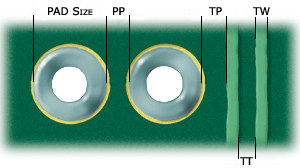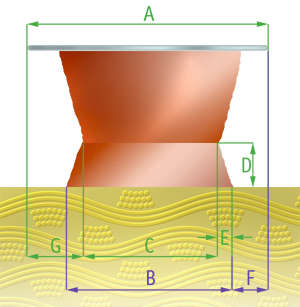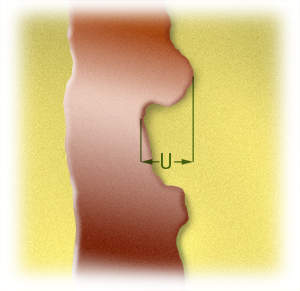What is track width (TW)?
The Track Width (TW) is specified in mm and is one of the parameters that determines the pattern class of the board.
A typical TW value is 0.150mm or 6mil. This is the value for our pattern class 6 our standard (See Eurocircuits Classification.). We define OTW as Outer layer Track Width and ITW as Inner layer Track Width
OTW or Outer layer Track Width
A : Resist width determined by the production master width.
B : Conductor base: position where the min. conductor width is measured.
C : Point of narrowest conductor width.
D : Cu-foil thickness.
E : Undercut.
F : Out growth (Fmax = A/8).
G : Overhang.
Etch-factor (D/E) >1
ITW or Inner layer Track Width
A : Resist width determined by the production master width
B : Conductor base: position where the min. conductor width is measured.
C : Point of narrowest conductor width.
D : Cu-foil thickness.
E : Undercut
Etch-factor (D/E) >1
Track Width as defined by Eurocircuits
Track width may not be reduced to less than 80 % of the nominal value.
Edge definition
acceptable unevenness (U)(crest to trough) regarding track width and spacing.
| nom. TT/TW | U |
| 120 µ | 24 µ |
| 150 µ | 30 µ |
| 200 µ | 40 µ |
| 300 µ | 60 µ |
| 500 µ | 100 µ |
There cannot be defects (edge roughness, nicks, pinholes, etc…) larger than 10% of the conductor length or more than 13mm whichever is less.




